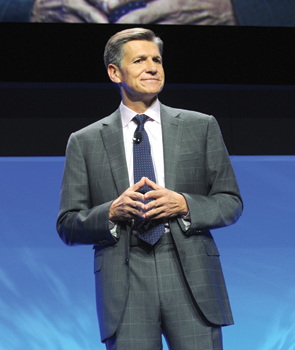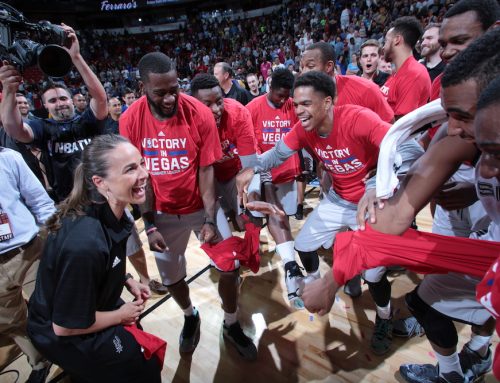P&G’s Pritchard outlines sports strategy
With 26 billion-dollar brands, Procter & Gamble’s influence is felt across consumer marketing. Now, having built up its sports sponsorship portfolio in recent years, P&G is exerting influence in that world as well, through ties to top-shelf properties and athletes. Marc Pritchard, P&G’s global marketing and brand building officer, spoke with SBJ Editor-at-Large Terry Lefton during the recent ANA annual conference about P&G’s growing interest and investment in sports marketing.
■ What’s at the top of your marketing agenda?
PRITCHARD: A fair amount of “back to basics.†The whole digital/social media discussion is not as dominant. Companies are beginning to master it, so now they can concentrate on insight and creativity. In the midst of all that, people still underestimate how powerful “search†is. It is so fundamental, but whereas it isn’t talked about much by marketing types, if you aren’t onto the right search terms, consumers won’t find you. Social and mobile are still the new toys, but basics are still important.
â– Â After years without a lot of sports marketing relative to your size, P&G now has some of the biggest properties, like a TOP Olympic deal, MLB and the NFL. What changed?
 |
| Pritchard says it’s all about making the right connections between a brand and a sport. Photo by: CLARION PICTURES |
PRITCHARD: We’d always done some sports, with stuff like the Tide car in NASCAR, but the
■ Everyone in sports marketing struggles with ROI. P&G quantifies everything. What’s your approach?
PRITCHARD: The Summer Olympics is not only the most-watched sports event in the world, they are the most-watched sports event by women. They gave us a chance to put all of our brands under a big umbrella. We proved that we could get incremental sales with the 2010 Vancouver Games, when we got $100 million in extra sales. We targeted $500 million in additional sales from the London Games and we are on track to get that. It all starts with convincing retailers to put up more display on their floors; then you’ll get more sales. They not only did more displays, they did multiple-brand displays in different parts of stores.
We also track whether an association is improving favorability and purchase-intent of our brands, and they are. Looking inward, we have found that consumers look upon a brand more favorably in those areas when they can identify it as a P&G brand. I want to make that connection stronger and get that message of performance and the linkage out there.
■ Budgets are being formed and finalized now. Will your marketing spend in 2013 include anything we wouldn’t expect?
PRITCHARD: The one area that might surprise you that we are pushing more resources to is PR. Part of that has to do with PR’s involvement with social media across the corporate landscape, and we also combine product placement in PR. It’s a larger way of saying word of mouth, the oldest advertising medium.
■ P&G is in sports more deeply than ever. What’s your advice to another company looking at a sizable sports investment for the first time?
PRITCHARD: The big thing is to first find a way to connect the benefits of your brand with the sport. Think through that linkage. If there really isn’t one, you are just borrowing interest. Why would Tide and a Tiddlywinks tournament have anything in common? Well, it would if we found a Tiddlywinks competition where the competitors got really dirty. Find your consumer insight, and it should lead to your creative solution, whether that’s sports or whatever.



